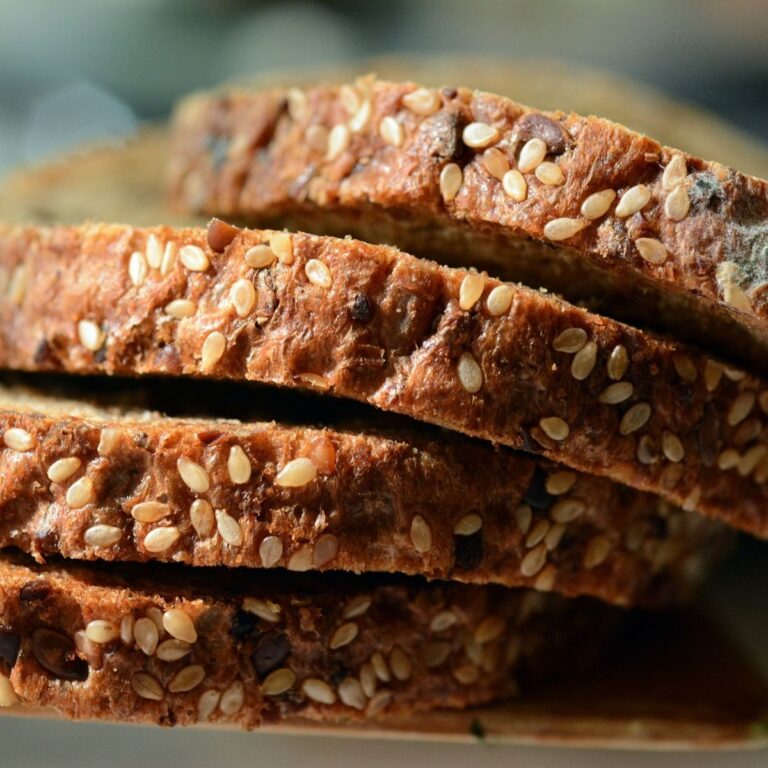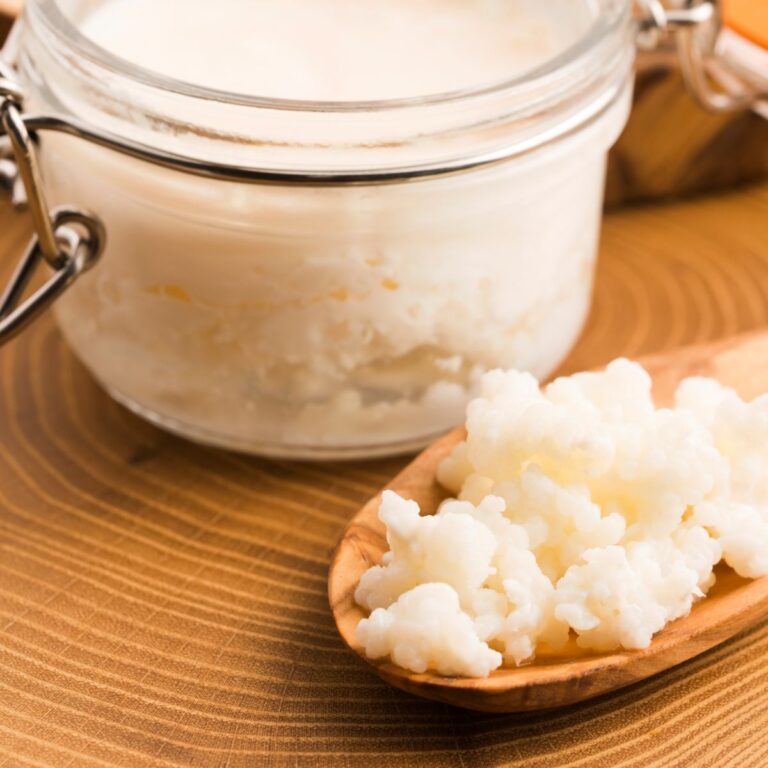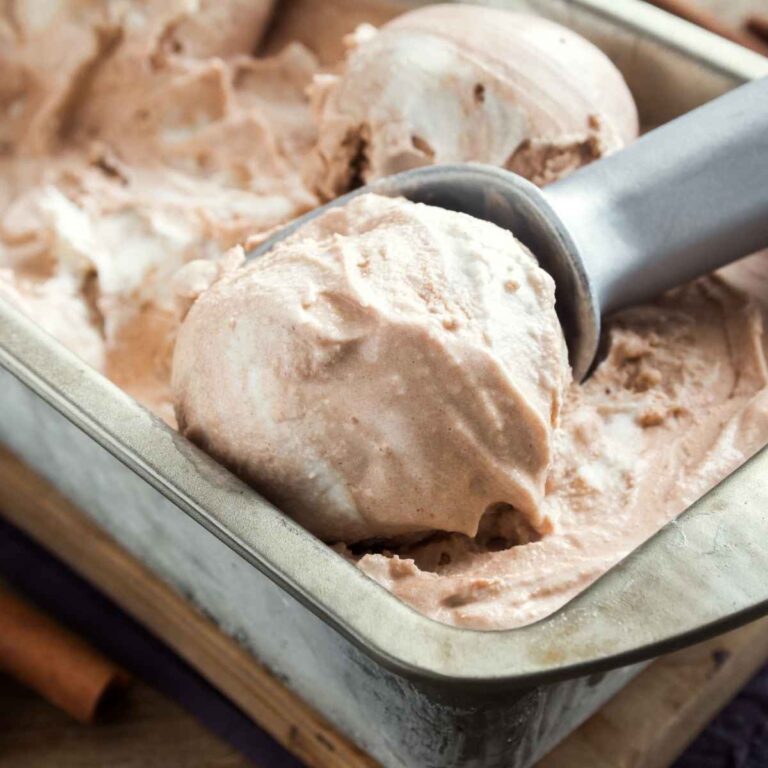How to Make Kombucha at Home (Easy Recipe for Beginners)
If you’re trying to find a healthier alternative to soda or juice, kombucha might just be your new best friend. I mean, I can’t even pronounce half the ingredients in a can of soda—let alone know what they actually are! Kombucha, on the other hand, is made from just a few simple, real ingredients and has tons of benefits for your body.
If you’re ready to jump on the kombucha craze, this guide is for you! I’ll show you exactly how to make kombucha at home in a few simple steps—even if you’re a complete beginner.

As an Amazon Associate I earn from qualifying purchases. This post may contain affiliate links which means I make a small commission at no extra cost to you. See my full disclosure and privacy policy here.
What is kombucha and why should you drink it
Kombucha is a fizzy, slightly tangy fermented tea that’s gone through a fermentation process. It starts out as sweet tea, but once fermented with a SCOBY (short for symbiotic culture of bacteria and yeast), it transforms into a bubbly, probiotic-rich drink full of goodness.
Some of the benefits of drinking kombucha include:
- Improved gut health
- Natural detox support
- A stronger immune system
- Better digestion
- Liver support
Plus, it just tastes good. Especially when you start experimenting with fun flavors in the second ferment (more on that below!)…..and you can even use it in recipes like this easy kombucha mayo for an extra gut-friendly boost!
My Kombucha Story (Spoiler: I Didn’t Love It at First)
The very first time I tried kombucha, my grandma handed me a glass of her homemade brew. I had never even heard of kombucha before, and honestly, that weird floating thing in her jar (the SCOBY) freaked me out. I took the tiniest sip, made a sour face, and thought, “Nope. Not for me.”
Fast forward a few months, and I was at a friend’s house when she offered me some of her homemade kombucha. Not wanting to be rude, I took a sip—and wow! It was ice cold, fizzy, and full of flavor. Totally different from the warm, flat taste I remembered. That’s when I learned my grandma’s kombucha was still in its first ferment stage, which meant it wasn’t quite finished yet.
As I started paying more attention to the things I was bringing into our home—non- toxic cleaning products, whole food ingredients, and everything in between—kombucha became one of those fun, healthier swaps I wanted to try for myself.
Important Note Before You Begin Making Kombucha at Home
If you have a lot of allergies or sensitivities, I recommend starting with just a small taste the first time you try kombucha, especially if it’s homemade. Everyone’s body is different!.
Some people choose to avoid homemade kombucha during pregnancy or while nursing due to the natural alcohol content (even though it’s minimal) and possible bacteria exposure. Talk to your healthcare provider if you’re unsure.
During the second ferment, fizz builds up, sometimes a lot! Always “burp” your bottles once a day (open the cap slowly to release pressure), especially if using fruit. Otherwise, they can explode (ask me how I know… 😅).

What You’ll Need to Make Kombucha at Home
Kombucha Supplies:
Medium-sized pot
Cotton cloth or coffee filter + rubber band
Stainless steel funnel (optional, but helpful if bottling)
Swing-top glass bottles (for second ferment, optional)
You can also purchase a complete kombucha making kit that has everything you need, EVEN the organic ingredients!
Kombucha Ingredients:
12 cups filtered water. I don’t recommend using tap water because of the possible bacteria content. Just grab a gallon of distilled water the next time youre at the grocery store.
3 tablespoons organic black loose leaf tea or 6 black tea bags. I really like using loose leaf oolong tea
1 cup organic cane sugar
1 SCOBY + 1 cup of starter tea liquid (from a previous batch or store-bought)
Tip: You can get a SCOBY from a friend who brews kombucha (they reproduce every batch!) or buy one online—I recommend checking out The Kombucha Shop
How to Make Kombucha (First Fermentation)
Boil 4 cups of filtered water in a pot, then turn off the heat.
Add tea (loose leaf or bags) and steep for 8–10 minutes.
Remove tea leaves or bags, then stir in 1 cup of sugar until fully dissolved.
Pour the sweet tea into your glass jar and add the remaining 8 cups of cold filtered water.
Gently add your SCOBY and the starter liquid to the jar.
Cover the jar with a cotton cloth or tea towel and secure it with a rubber band.
Let it ferment in a warm, dark place (like a cupboard or pantry) for 10–12 days.
After the first ferment, your kombucha should taste slightly tart and not too sweet. You’ll also notice your SCOBY has grown—you can save it for your next batch!

Second Kombucha Fermentation: Add Flavor + Fizz
If you love your kombucha fizzy and full of flavor (like me!), it’s time for the second ferment. Here’s how to do it:
- Remove the SCOBY and set it aside in a clean jar with 1 cup of your finished kombucha (this becomes the kombucha starter for your next batch).
- Pour the rest of the kombucha into swing-top bottles or jars.
- Add flavorings, see ideas below! Or you can totally leave it as unflavored kombucha
- Seal the containers and let them sit at room temp in a dark spot out of direct sunlight for 2–4 days to carbonate.
- Once bubbly, transfer to the fridge and enjoy!
Kombucha Flavor Combination Ideas
Get creative! You can use fresh fruit, juice, or even fruit scraps.

Here are some of my favorite combinations:
- 🍎 Apple + Cinnamon
- 🥒 Cucumber + Mint
- 🥭 Mango + Pineapple
- 🫐 Blueberry + Strawberry
- 🍋 Ginger + Lemon
- 🍒 Tart Cherry Juice
- 🍊 Orange Peel + Vanilla
- Or try this delicious watermelon 🍉 recipe
My go-to? Whatever fruit scraps I have on hand! It’s a great way to reduce waste and try new flavors.
How To Make Kombucha At Home FAQs
Can I use green tea instead of black tea?
Yes! Green tea works too, but black tea is more robust and reliable for beginners. Check out this post where I talk about it in detail.
Is homemade kombucha safe?
Yes, if made with clean equipment and stored properly, it’s very safe. Just make sure there’s no mold growth on your SCOBY (it’ll look fuzzy and green or black—toss it if you see that).
Can kids drink kombucha?
In small amounts, yes! Most moms, myselt included, offer just two or three ounces at a time due to the trace amounts of caffeine and naturally occurring alcohol content from fermentation. The alcohol content is minimal but still something to be aware of when giving to kids.
How do I know when my kombucha is ready?
Taste it! After 7–10 days, pour a little into a cup. If it still tastes sweet, it needs more time. If it’s tangy and slightly sour with a bit of fizz, you’re good to go. I usually start checking around day 9.
What’s the brown stuff floating on top of the jar? Is that normal?
Totally normal. Brown stringy bits are just yeast, which is part of the fermentation process. As long as there’s no fuzzy mold (green, black, or white), your kombucha is just fine!
Why isn’t my kombucha fizzy?
Fizz usually happens during the second ferment when the kombucha is sealed and left at room temperature. If it’s not bubbly, it could be too cold in your house, the bottles weren’t airtight, or it didn’t ferment long enough.
Do I have to use sugar? Can I substitute it?
Yes, you do need sugar—it’s food for the SCOBY. Most of it gets eaten up during fermentation, so your final drink won’t have much sugar left. Honey, maple syrup, or sugar substitutes don’t work well in the first ferment and can actually harm your SCOBY.
How much kombucha can I drink a day?
If you’re new to kombucha, start with about 4 oz and see how your body feels. I usually enjoy 4–8 oz a day. Because it’s fermented, too much at once can cause bloating or detox symptoms if your body’s not used to it.
What do I do if my SCOBY sinks or floats sideways?
Don’t worry! SCOBYs are weird little things. They might float, sink, or hang out sideways—and it’s all totally normal. A new SCOBY will usually start forming on top during the ferment no matter what the original SCOBY is doing.
Can I reuse my SCOBY?
Yes! You can reuse it over and over. Just store it in a clean glass jar with a little kombucha (starter culture) between batches. They also multiply, so you’ll likely have extras to give away or start a SCOBY hotel!
Help! There are fruit flies around my kombucha—what do I do?
Ugh, fruit flies love kombucha just as much as we do. The best way to keep them out is to make sure your jar is always covered tightly with a breathable cloth (like tightly woven cotton or a coffee filter) and a rubber band. Avoid using cheesecloth—it’s too open and lets them sneak in.
If fruit flies do get in and lay eggs in your brew, you’ll need to toss that batch and start fresh with a clean jar and a backup SCOBY (another good reason to start a SCOBY hotel!).
How To Make Kombucha at Home Save For Later

Final Thoughts
Once you start brewing kombucha tea at home, it becomes second nature, and way cheaper than store-bought kombucha! Plus, it’s a fun way to introduce more gut-friendly foods into your family’s routine.
Let me know if you try it! And if you’re already a home-brewed kombucha fan, I’d love to hear your favorite flavor combos.
Related post: Most Asked Kombucha Questions—Answered!
How to make a SCOBY hotel to keep all your baby scobys
Your Most Frequently Asked Questions

Homemade Kombucha (Beginner Friendly Recipe)
This easy, beginner-friendly kombucha recipe walks you through the process of making your own probiotic-rich, fizzy tea at home. With just a few ingredients and a little patience, you’ll be sipping on your own custom-flavored kombucha in no time!
Ingredients
- 12 cups filtered water
- 3 Tbsp organic black loose leaf tea or 6 black tea bags
- 1 cup organic cane sugar
- 1 SCOBY + 1 cup starter liquid
Instructions
First Ferment:
Bring 4 cups of filtered water to a boil. Remove from heat.
Add tea and steep for 8–10 minutes. Discard tea.
Stir in sugar until fully dissolved.
Pour into your gallon jar. Add remaining 8 cups of cold filtered water.
Gently add SCOBY + starter liquid.
Cover with cloth and secure with rubber band.
Ferment in a warm, dark spot for 10–12 days. Taste for sweetness and tang.
Second Ferment (Optional for Fizz + Flavor):
Remove SCOBY and store it in a jar with 1 cup kombucha for next batch.
Pour finished kombucha into bottles or jars.
Add fruit, juice, or flavorings.
Seal tightly and ferment at room temp for 2–4 days.
Refrigerate and enjoy!
Notes
1. Always use non-metal tools and filtered water to keep your SCOBY healthy.
2. Make sure the kombucha is kept in a dark, warm area (ideally around 75–85°F) while fermenting.
3. For extra fizz, don't skip the second ferment with a tightly sealed bottle.
4. You can reuse your SCOBY with each new batch and even start a SCOBY “hotel” for backups.
5. Kombucha is naturally low in alcohol, but homemade versions may contain slightly more than store-bought.






I do not like and cannot drink black or green tea. After fermentation is the drink flavored after what tea is used or you just use it for the starter?
Hey Alex, the tea is used for the starter. I personally don’t taste the flavor of the tea that was used, especially if you are flavoring the kombucha with fruit.
Hi! My sister gave me a very developed scoby so will I still have to wait the 10-12 days for a batch of kombucha? I have about 2-3 cups liquid and several scobys.
Hello, I’ve been making kombucha for a long time couple years. I had a continuous brew. Then I stopped, but I kept Scobie’s around. It’s been a 1 1/2 I started back up. Used your directions cause I needed to look back. Perfect. Thank you😊
Do you know the actual sugar content of the finished product? And will it get fizzier if you bottle and place in fridge or does it have to stay room temp to get fizzier?
Do I need filtered water? If so where can I get that.
I followed it to the letter, including 2nd ferment and fizz, thank you so much for your guidance, it worked so well I even started my own scoby hotel.
I’m so glad Michael, thanks for coming back to let me know! Enjoy your kombucha!
I understand that the scoby “eats” the sugar, so it seems that keto style sweeteners are not going to work, is this correct? Also, I don’t use caffeine. Can herbal teas be used or is black tea necessary? I have a tea that I really enjoy and if it’ll work would try it. Thank you
Hi Susan, I am not familiar with keto sweeteners so I am not sure if they will work or not. As far as the type of tea to use, I do not recommend herbal teas because most herbal teas don’t have the requiered nutrients the SCOBY needs to ferment.
I have made 2 batches so far and neither had any fizz. I used swing bottles the second time hoping that was the reason and still no fizz. It was very flat. I’m following the directions and using filtered water, testing the PH etc and am very disappointed! What am I doing wrong??
The fizz comes from the second fermentation, and usually the longer (about 5-7 days usually works for us) you leave it fermenting the second time in a dark cool place the fizzier it gets. Are you doing a second ferment? Also, make sure you are adding enough sugar content to the second ferment, like fruit scraps or even a few drops of stevia leaf extract.
hmm, I would experiment with adding more sugar, actual cane sugar, and letting it ferment a few days longer maybe a whole extra week. I would also check the room temperature of where it’s fermenting, ideally it should be warm. The colder the room the slower the fermentation process.
I have never tried kombucha, but I’m interested in making my own. Could sugar be replaced with honey? If so, how much?
Hi Micki,
I personally have never tried brewing kombucha with honey so I can’t really speak to what kind of results you might get by switching. Theoratically you should be able to switch to a high sugar content honey like wildflower honey. The fermemting time and taste might be a bit different but it’s worth a shot if you really don’t want to use regular sugar. But remember that most of the sugar you add to kombucha is consumed by the SCOBY not leaving a significant amount of sugar in the end product.
Kombucha made with honey is called Jun. I think it requires a special SCOBY, as the sugar is different in honey than cane sugar.
Yes you are correct! I actually i’m just starting to experiment with a jun SCOBY, can’t wait to share about that process here on the blog in the near future.
Yes you can use honey but you can’t use a scoby for that. That would be called a jun. The jun feeds off of the honey instead of the sugar and it is a shorter fermentation. 😬
Do you need to use a whole cup of sugar? I try not to use much and wondered if it was necessary.
Hi Nancy,
Yes the cup of sugar is necessary because that’s what the yeast (SCOBY) feeds on. But don’t worry, through the fermentation process most of the sugar is consumed by the yeast so there is really not much sugar left in the end product.
Ooooh thanks for the recipe. Can I ask.. how long does the kombucha last once it’s made?
If you keep it in the fridge it will for sure last at least 6 months. Enjoy!
How long can I leave it for first fermentation?
Is it normal for a clear film to grow on top of Kombucha? This is my first attempt!!! Thanks
yes its totally normal. What day are you on? the film most likely is the formation of a new layer on your scoby. Let me know if you have other questions!
Thank you Sinai. I am on day eight.
Ok this seems easy enough, but for some reason I’m still nervous!
I totally get it! I go through the same thing with anything new I want to learn but i’m intimidated by. I’ll help you through all your questions the best I can, message me anytime!☺️
Making kombucha is on my to-do list. I’m sure it would be much cheaper to make at home!
I have never bought kombucha from the store so I can’t really compare the cost, but you can make quite a few gallons of it with one bag of black tea leaves. Let me know if you have any other questions when you try to make your own.